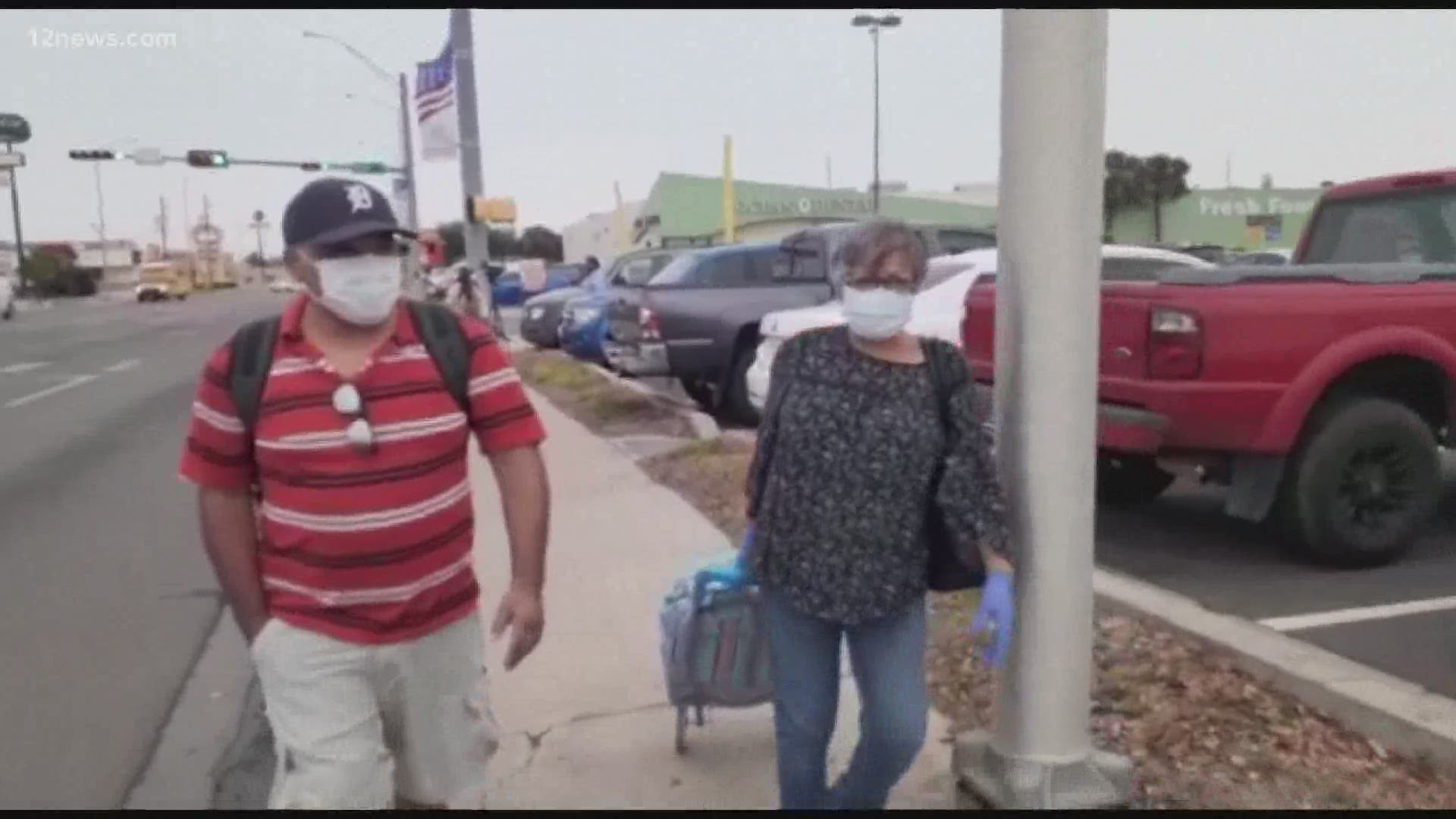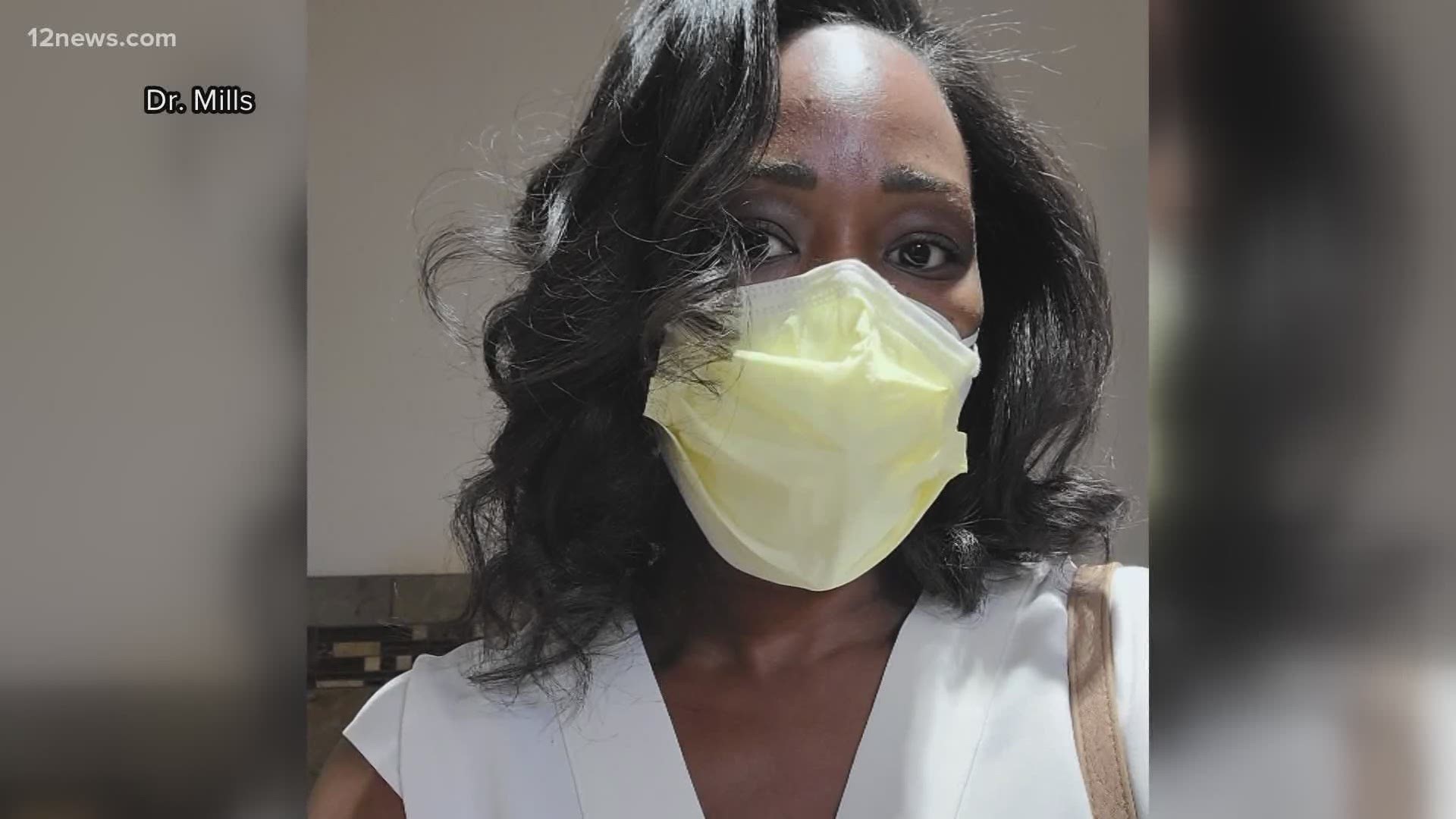PHOENIX —
For two weeks, Arizona has been one of the nation’s COVID-19 hot spots.
Under pressure from medical professionals, elected officials and the public to respond, Gov. Doug Ducey on Wednesday did an about-face.
Ducey walked back what he said less than a week ago and allowed Arizona cities to implement and enforce the use of face masks in public.
Researchers say face masks can dramatically reduce the spread of the coronavirus.
Arizona cases have spiked since Ducey’s stay-at-home order was phased out May 15.
At a news conference last week, Ducey had rejected calls for the cities to take action. They had no business setting policies during a pandemic, he said. In fact, a Ducey executive order barred them from doing that.
Within hours of Ducey’s announcement Wednesday, several cities - including the state’s largest, Phoenix, Tucson and Mesa - said they were taking steps to require face masks.
The governor set a different tone for the news conference when he walked into a downtown room he’s used many times to brief the media and the public.
For the first time, Ducey wore a mask as he sat down before the cameras. He then took off the mask and cleaned his hands with sanitizer before beginning his remarks.
The mask-and-cleanse scene mirrored Maricopa County medical director Dr. Rebecca Sunenshine’s confession last week that she shunned masks until research showed they helped stop the spread of the coronavirus.
One of the first slides in Ducey’s PowerPoint briefing appeared designed to counteract controversial remarks about COVID-19 last week by his public health director, Dr. Cara Christ.
“We know that it’s in the community, and that we can’t stop the spread,” she said last week. “We can’t stop living, as well.”
The slide: “Slow & Contain The Spread.”
Ducey issued an executive order that grants cities, towns and counties the ability to set and enforce policies on face masks to slow the infection’s spread.
The enforcement guidelines require governments to use Ducey’s favored “light touch:" Give an offender the opportunity to comply before taking action.
The following was also in the new executive order, Ducey’s 40th during the pandemic:
Business enforcement: Businesses must update and enforce state policies to contain the spread.
Law enforcement and regulatory agencies can take action that starts with the “light touch’ and can then proceed to unspecified penalties.
Videos of packed clubs and bars in Old Town Scottsdale have exposed businesses that aren’t following any guidelines.
Contact tracing: Four months into the pandemic, the state Department of Health Services will create and manage a statewide system for case investigation contact tracing - the detective-like task of tracking down people who’ve come into contact with a COVID patient.
To date, the system has been handled by county health departments.
Public health experts say the work is vital to control the spread, and should be in place when a state reopens.
Arizona reopened a month ago. This new order indicates the state is well behind the curve.
The governor has called up 300 National Guard members to do contact tracing in all of the state’s 15 counties.
Speaking earlier Wednesday, Arizona State University’s Josh LaBaer, director of the Biodesign Institute, compared Arizona’s infection spread to a speeding car.
Pointing to a graphic showing Arizona’s case rate climbing more sharply than other states’, LaBaer said: “The state is trending in a new direction and that … is the direction you don’t want to go.”
“That is the foot on the accelerator. That is the car going after and faster moment by moment.”
New projections from an ASU modeling team showed where the state might be heading:
- If current trends continued, there could “very concerning” exponential case growth
- If no steps were taken, case counts, hospitalizations and ICU bed use would continue to rise
- If projections were accurate, Arizona might run out of hospital beds by late this month or early July.
The team advised strategies such as wearing masks and social distancing to slow the spread.
The model was shared with the state Department of Health Services last week.



